#la grenouillére
Text
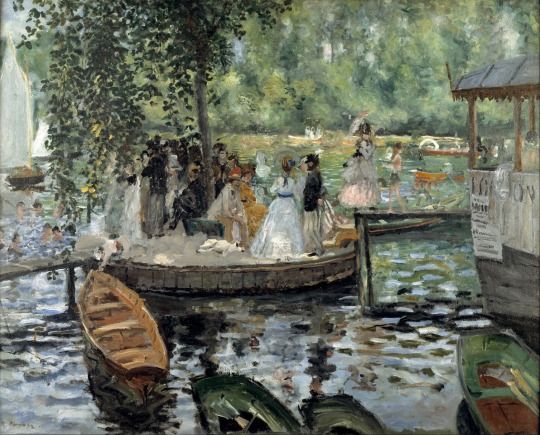
la grenouillére by pierre-auguste renoir
1869; oil on canvas
#la grenouillére#pierre auguste renoir#impressionism#renoir#art#painting#beauty#history#classical art#love#19th century art#aesthetic#oil painting#oil on canvas#green#green aesthetic#water#impressionist#boats#classical#reflection#dock
321 notes
·
View notes
Note
Your favorite Impressionist painter?

Hi thank you for asking! It may sound a bit cliché but for me it's Claude Monet. His paintings are of the most beautiful pastel hues and his use of blues (my favourite colour) and after I've read the below article it just made me love him more.
Why did Claude Monet love the colour blue so much? Well, it all began with four friends and a mistake...
The year is 1862, and four young painters at the French Academy of Fine Arts called Claude Monet, Pierre-Auguste Renoir, Alfred Sisley, and Frédéric Bazille, realised they had something in common. Academic painting all took place in a studio, much like this:

The four of them found it old-fashioned, unrealistic, and uninspiring. The Academic style seemed artificial (carefully orchestrated lighting) and contrived (it imitated the Renaissance). And the themes - of Biblical and Classical history or mythology - didn't interest them.
So they starting painting outdoors ("en plein air" in French) and, led by the older artist Edouard Manet, embraced a wholly different form of realism. Outside the studio, lighting and human figures were *different*. In Manet's Balcony we can detect the start of this shift:

Soon enough Paul Cezanne and Camille Pissarro joined them, and a movement was born. They didn't paint reality as a camera might capture it, but as the eye perceives it from one moment to the next with all its movement, changing light, sudden glimpses, fog, and blur:

And they started to realise just how important colour was. Even in Monet's early works, like La Grenouillére (1869), we can see this in action. Up close there is no "form" as there was in Academic painting, but from a distance those splashes of colour unite to create reality:

And then, as Renoir said, “one morning, one of us ran out of black, and it was the birth of Impressionism.” This was the big leap: from the black shadows of Academicism to the blue shadows of Impressionism. Their paintings suddenly had an extraordinary brightness and vividity. After all, no shadow is truly black; it comprises a mixture of tones and colours.
And blue is the ultimate shade of the outdoors, being the colour of the sky and from there permeating everything else with its tones, even snow.
But Monet would take this further than anybody else, not only casting his work through a subtle lens of natural blue brightness, but diving headlong into the world of shifting colours and into the fundamental "blueness" of the outdoors. Like the London fog, say:

Or the Venetian Grand Canal, the river Seine, the cathedral of Rouen, or the poplars of Normandy. Another technique the Impressionists adopted was the use of brighter canvasses. Normally they were dark grey, but by the end Monet and co were using white canvasses.
When we think of a painter, one of the first images that comes to mind is a scruffy looking figure sitting outdoors with an easel, palette, and bundle of brushes. And it was Monet, more than any of his contemporaries, who fully immerged himself in *the* colour of Impressionism, the colour of the outdoors: blue.
But, by his late career, we find the Monet so well-known, so well-loved. Blueness has descended, filtered through snow and sunlight and haze, and the world has splintered into brush-strokes of colour. Impressionism had, perhaps, found its highest form.
He travelled to London and Venice, taking that style with him, and painted those cities in ways that, far from what a photograph would capture, seem to contain something truer about them, about how they *feel* to see, the impression they leave...

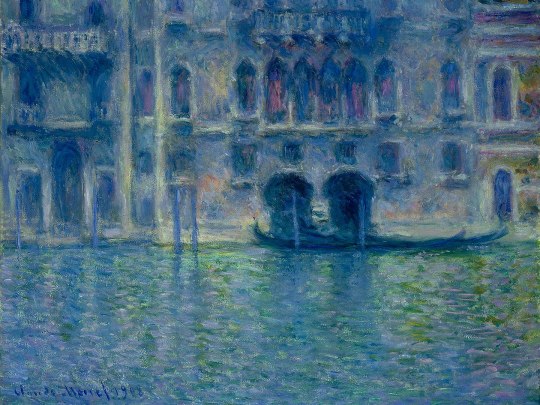
And, of course, in his beloved garden, where Monet bequeathed an artistic gift to the world with his two hundred and fifty paintings of water-lilies.
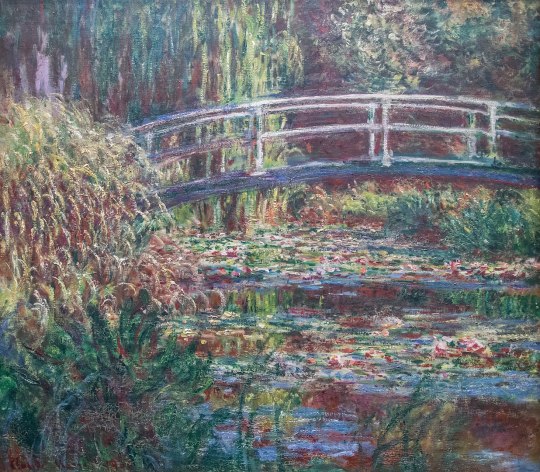
And here is Claude Monet himself, one of the most enduringly popular painters of our time, photographed with the bridge and pond made famous by his work, and, as he surely so loved, en plein air...

#dark academia#light academia#academia aesthetic#classical#academia#escapism#classic literature#books#books and libraries#architecture#art#painting#thanks for the ask!#ask me anything#royal core#cottage core#aesthetics#impressionism#claude monet#1800s#19th century
297 notes
·
View notes
Text
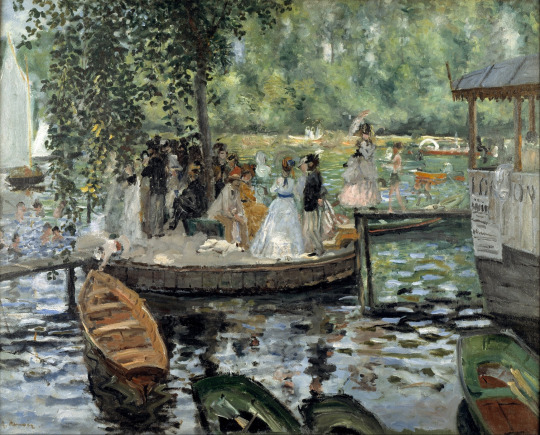
La grenouillére - 1869 - Pierre-Auguste Renoir
If you want follow me on Instagram too
https://instagram.com/urr.dailyart?igshid=YmMyMTA2M2Y=
216 notes
·
View notes
Text
Color del Impresionismo
Antes de los impresionistas, el color era literal, el color autentico del objeto real a la luz ordinaria. Los impresionistas cambiaron el concepto de como se usaba el color a partir de la iluminación o elementos de la naturaleza como el efecto del sol, o las condiciones climáticas. Los impresionistas buscaron las condiciones de la naturaleza y utilizaron múltiples colores para crear la sensación e impacto adecuados de la amplia gama de colores que encontraron, pintando en plein air.
Los artistas anteriores generalmente pintaban de color marrón medio u oxido en el lienzo como base o capa inferior hasta llegar a los colores reales. os impresionistas en cambio prefirieron un fondo claro, ayudando a fortalecer los colores de pintura brillantes para desarrollar sus imágenes saturadas de luz.
¿Saben cual era el color favorito de los impresionistas? El blanco, con el blanco mesclado con otros colores creaban colores brillantes reflectantes de la luz. Rara vez usaban colores terrosos más oscuros como los pintores anteriores.
Los impresionistas también utilizabancolores complementarios de manera única. Mezclar colores complementarios produce un color barro opaco; sin embargo, colocaron trazos de colores complementarios uno al lado del otro, dando a cada color más intensidad.
El ojo ve un color único o local y sabe que es rojo o azul; sin embargo, cuando el color local se coloca junto a otro color, la percepción del color local cambia. Esa intensidad era esencial para lograr la calidad luminosa de sus pinturas al aire libre, capturando la influencia de la luz del sol, los reflejos en el agua, o el movimiento de las hojas.
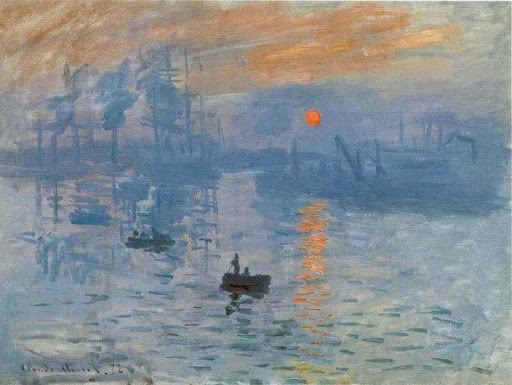
Claude Monet, Sol naciente (1872) Óleo sobre lienzo
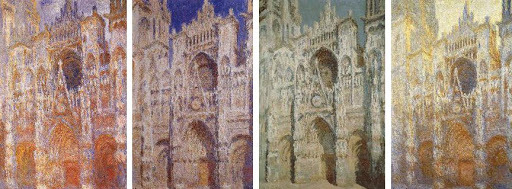
Claude Monet, algunas obras de la serie de la Catedral de Rouen (1892-1894)
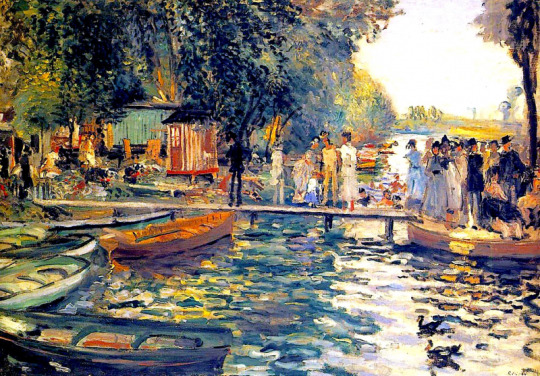
Pierre-Auguste Renoir, La Grenouillére (1869)
0 notes
Text
Spotify advancing francophobie by not including lyrics for old ass metis folk songs about the pemmican war
3 notes
·
View notes
Text
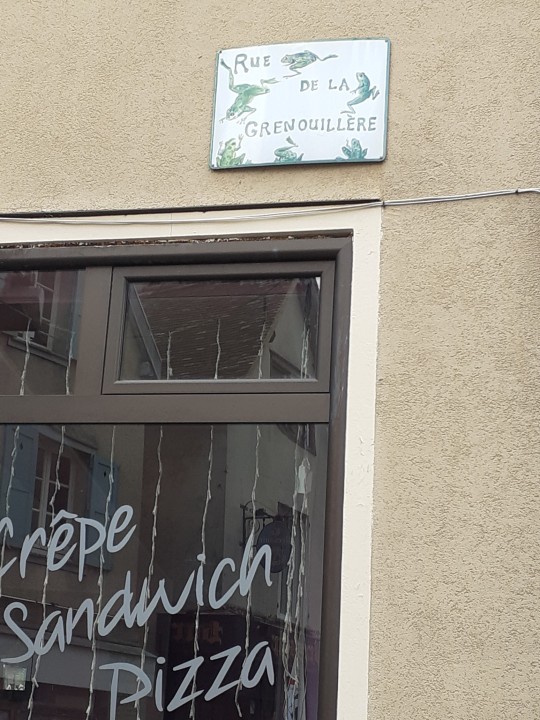
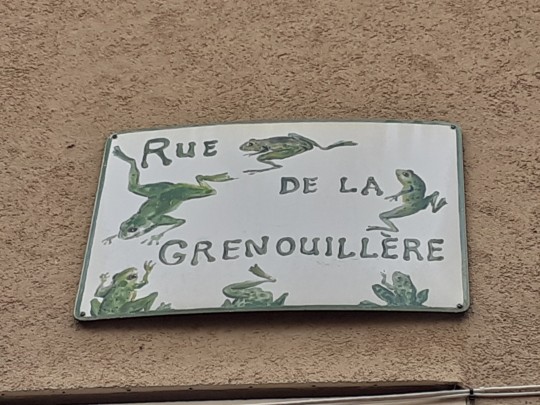
Rue de la grenouillére
"Frog Street", Chartres, France
174 notes
·
View notes
Text
La Grenouillére (1869)
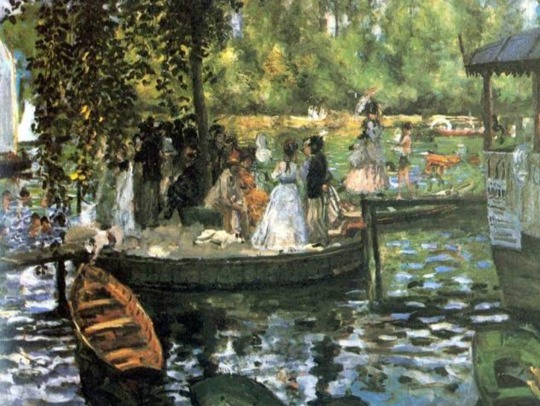
"The pain passes, but the beauty remains."
~ Renoir
#aesthetic#art#painting#art history#artwork#classical art#famous paintings#famous painters#renoir#dark academic aesthetic#dark academia#art museum#artoftheday
32 notes
·
View notes
Text

bain á la grenouillére by claude monet
1869; oil on canvas
#bain á la grenouillére#claude monet#impressionism#oil on canvas#la grenouillére#art#painting#beauty#history#classical art#love#19th century art#aesthetic#oil painting#19th century#beautiful#impressionist#french impressionism#early impressionism#green#blue#reflection#boats#dock#monet
99 notes
·
View notes
Photo
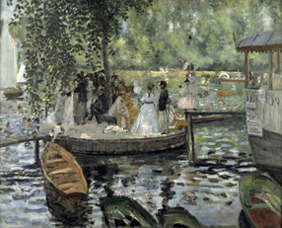
Auguste Renoir - La Grenouillére
4 notes
·
View notes
Photo

La Grenouillère (via The Met)
Paulus Constantine La Fargue (The Hague, 1729-1782), Claude Monet (French, 1840–1926), Fernand Khnopff (Belgian, 1858–1921)
https://blog.naver.com/artnouveau19/221327690386
Paulus Constantine La Fargue (The Hague, 1729-1782), The barge-canal between The Hague and Leiden at Leidschendam, 1756, Rijksmuseum Twenthe.
https://en.wikipedia.org/wiki/Paulus_Constantijn_la_FarguePaulus Constantine La Fargue (The Hague, 1729-1782), The Hall of the Artistic Society 'Kunst wordt door Arbeid verkregen' (Art is Acquired through Labor) in Leiden, Paulus Constantijn la Fargue, 1780, oil on canvas, h 57.3 cm × w 73.8 cm, Rijksmuseum.
https://www.rijksmuseum.nl/en/search/objects?q=Paulus+Constantine+La+Fargue+The+barge-canal+between+The+Hague+and+Leiden+at+Leidschendam&f=1&p=1&ps=12&ondisplay=True&st=Objects&ii=0#/SK-A-3834,0
https://commons.wikimedia.org/wiki/File:Fargue,_Paulus_Constantijn_la_-_Interieur_van_de_zaal_van_het_genootschap_%27Kunst_wordt_door_Arbeid_verkregen%27_te_Leiden.jpgOscar-Claude Monet (French, 1840–1926), Impression, soleil levant (Impression, Sunrise), 1872, Oil on canvas, 48 cm × 63 cm (18.9 in × 24.8 in), Musée Marmottan Monet, Paris.
https://en.wikipedia.org/wiki/Impression,_SunriseClaude Monet (French, 1840–1926), Garden at Sainte-Adresse ("Jardin à Sainte-Adresse"), 1867, 98.1 cm × 129.9 cm (38 5/8 in × 51 1/8 in), Metropolitan Museum of Art, New York.
https://en.wikipedia.org/wiki/Garden_at_Sainte-AdresseClaude Monet (French, 1840–1926), Woman in a Garden, 1867, Hermitage, St. Petersburg.
https://en.wikipedia.org/wiki/Claude_Monet#/media/File:Claude_Monet_022.jpgClaude Monet (French, 1840–1926), La Grenouillére, 1869, 74.6 cm (29.4 in) × 99.7 cm (39.3 in), Metropolitan Museum of Art, New York.
https://en.wikipedia.org/wiki/Bain_à_la_Grenouillère
https://www.metmuseum.org/art/collection/search/437135Claude Monet (French, 1840–1926), The Magpie, 1868–1869, 89 cm × 130 cm (35 in × 51 in), Musée d'Orsay, Paris.
https://en.wikipedia.org/wiki/The_Magpie_(Monet)Claude Monet (French, 1840–1926), Coquelicots, La promenade (Poppies), 1873, Musée d'Orsay, Paris.
https://en.wikipedia.org/wiki/Claude_Monet#/media/File:Claude_Monet_037.jpgClaude Monet (French, 1840–1926), La Femme à l'ombrelle — Madame Monet et son fils (Woman with a Parasol - Madame Monet and Her Son), 1875, 100 cm × 81 cm (39 in × 32 in), National Gallery of Art, Washington, DC.
https://en.wikipedia.org/wiki/Woman_with_a_Parasol_-_Madame_Monet_and_Her_SonClaude Monet (French, 1840–1926), Study of a Figure Outdoors: Woman with a Parasol, facing left, 1886. Musée d’Orsay.
https://en.wikipedia.org/wiki/Claude_Monet#/media/File:Claude_Monet_023.jpgFernand Khnopff (Belgian, 1858–1921), I Lock My Door Upon Myself, 1891, Neue Pinakothek, Munich.
https://www.photo.rmn.fr/C.aspx?VP3=SearchResult_VPage&STID=2C6NU0TFP16T
https://www.pinterest.co.kr/pin/521362094356160198/Claude Monet (French, 1840–1926), Rouen Cathedral at sunset, 1893, Musée Marmottan Monet.
https://en.wikipedia.org/wiki/Claude_Monet#/media/File:Claude_Monet_-_Rouen_Cathedral,_Facade_(Sunset).JPGClaude Monet (French, 1840–1926), The Seine Near Giverny, 1897, Museum of Fine Arts, Boston.
https://en.wikipedia.org/wiki/Claude_Monet#/media/File:Claude_Monet_-_Branch_of_the_Seine_near_Giverny.JPGClaude Monet (French, 1840–1926), Grand Canal, Venice, 1908, Museum of Fine Arts, Boston.
https://en.wikipedia.org/wiki/Claude_Monet#/media/File:Claude_Monet,_Le_Grand_Canal.jpgThe Credit Suisse Exhibition: Monet & Architecture
Until 29 July 2018
Sainsbury Wing
The National Gallery
https://www.nationalgallery.org.uk/whats-on/exhibitions/the-credit-suisse-exhibition-monet-architectureClaude Monet (French, 1840–1926), Grand Canal, Venice, 1908, Fine Arts Museums of San Francisco.
https://en.wikipedia.org/wiki/Claude_Monet#/media/File:Monet_Grand_Canal_Legion_of_Honor.jpg
0 notes

